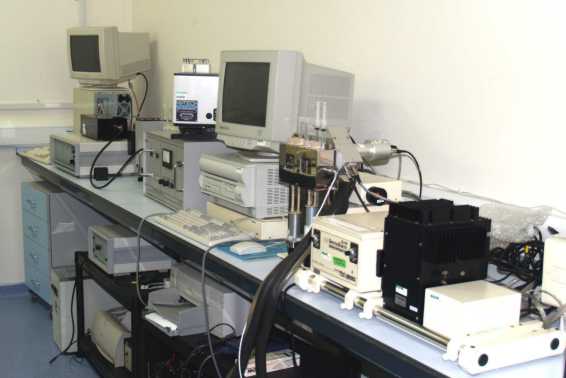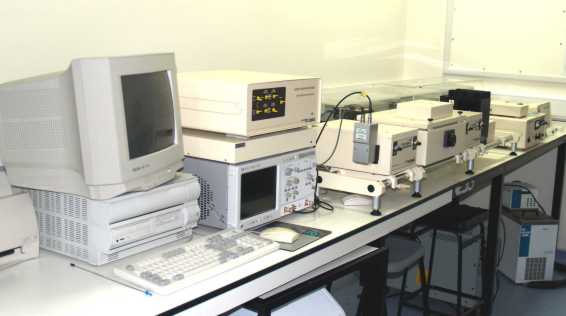 |
Department of Biochemistry |
|
Molecular Enzymology Group (MEG) Molecular Enzymology is a major research activity within the Departments of Biochemistry and Chemistry located primarily on the 2nd floor of the West wing of the Henry Wellcome Building. MEG is a leading centre for the study of enzyme reaction and other forms of protein dynamics in the UK. Research groups working in the area of Structural and Chemical Biology also support components of research activity in the area of enzymology.
FacilitiesRapid-reaction equipment (photo archive) Single molecule fluorescence microscopy (photo archive) MEG is well equipped for studies of the dynamics of enzyme catalysed reactions. The group currently houses several stopped-flow instruments with dual wavelength fluorescence (intensity and anisotropy), absorption detection and multiple wavelength diode array detection. Equilibrium perturbation (e.g. temperature jump) and rapid quench methods are also available. MEG continues to develop methodology in the area of single molecule protein dynamics and has state-of-the-art instrumentation for analysing the fluorescence properties of biological molecules. The group has a laser flash photolysis instrumentation for the analysis of biological reactions down to the ns time-scale. The instrumentation is suited to studies with caged substrates and also for the photo-initiation of electron transfer reactions in proteins. Kinetic studies by surface plasmon resonance (SPR) are also possible using a Biacore instrument.In addition to the specialised equipment above, MEG also houses standard analytical instruments (e.g. spectrophotometers, fluorimeters, and a circular dichroism spectrophotometer) and is fully equipped for the production and isolation of enzyme molecules and their manipulation via recombinant DNA methods. HistoryThe background to MEG
|
||||||||||||||||||||||||
Last updated: 27 June 2008
Biochemistry Web Maintainer
This document has been approved by the head of department or section.
If you are an authorised user you may edit this document through your Web browser.

